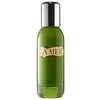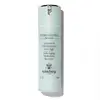What's inside
What's inside
 Key Ingredients
Key Ingredients

 Benefits
Benefits

 Concerns
Concerns

 Ingredients Side-by-side
Ingredients Side-by-side

Butylene Glycol
HumectantGlycerin
HumectantAlgae Extract
EmollientBis-PEG-12 Dimethicone
EmollientHydrogenated Lecithin
EmulsifyingCaprylic/Capric Triglyceride
MaskingSucrose
HumectantLimnanthes Alba Seed Oil
Skin ConditioningSesamum Indicum Seed Oil
EmollientMedicago Sativa Seed Powder
Skin ConditioningHelianthus Annuus Seedcake
AbrasivePrunus Amygdalus Dulcis Seed Meal
AbrasiveEucalyptus Globulus Leaf Oil
PerfumingSodium Gluconate
Skin ConditioningCopper Gluconate
Skin ConditioningCalcium Gluconate
HumectantMagnesium Gluconate
Skin ConditioningZinc Gluconate
Skin ConditioningTocopheryl Succinate
AntioxidantNiacin
SmoothingSesamum Indicum Seed Powder
Skin ConditioningCitrus Aurantifolia Peel Extract
CleansingCommiphora Mukul Resin Extract
Skin ConditioningCodium Tomentosum Extract
Skin ProtectingPolygonum Cuspidatum Root Extract
AntioxidantVitis Vinifera Seed Extract
AntimicrobialHumulus Lupulus Extract
AntimicrobialCitrus Reticulata Peel Extract
Skin ConditioningAsparagopsis Armata Extract
Skin ProtectingSalicornia Herbacea Extract
Skin ConditioningAlcaligenes Polysaccharides
EmollientGlucose
HumectantPorphyridium Cruentum Extract
Skin ConditioningSigesbeckia Orientalis Extract
Skin ConditioningSqualane
EmollientCholesterol
EmollientCaffeine
Skin ConditioningUndaria Pinnatifida Extract
Skin ConditioningAscophyllum Nodosum Extract
Skin ConditioningLaminaria Digitata Extract
Skin ProtectingMaris Sal
Skin ConditioningCastanea Sativa Seed Extract
Skin ConditioningPlankton Extract
Skin ConditioningGlycine Soja Seed Extract
Skin ConditioningAcetyl Hexapeptide-8
HumectantTrehalose
HumectantLactoperoxidase
StabilisingDimethicone
EmollientLecithin
EmollientDipotassium Glycyrrhizate
HumectantGlycine Soja Protein
EmulsifyingRosmarinus Officinalis Leaf Extract
AntimicrobialPunica Granatum Fruit Juice
MaskingGlucose Oxidase
StabilisingLinolenic Acid
CleansingHydrolyzed Rice Extract
Skin ConditioningLaminaria Saccharina Extract
Skin ProtectingYeast Extract
Skin ConditioningAcetyl Glucosamine
Skin ConditioningBisabolol
MaskingGlycosaminoglycans
EmollientEthylhexylglycerin
Skin ConditioningSodium PCA
HumectantTourmaline
Linoleic Acid
CleansingSorbitol
HumectantUrea
BufferingTocopheryl Acetate
AntioxidantPentylene Glycol
Skin ConditioningSodium Hyaluronate
HumectantPolyquaternium-51
Skin ConditioningEthylbisiminomethylguaiacol Manganese Chloride
AntioxidantHydroxypropyl Cyclodextrin
MaskingMagnesium Ascorbyl Phosphate
AntioxidantNordihydroguaiaretic Acid
AntioxidantSodium Hydroxide
BufferingAlcohol Denat.
AntimicrobialCarbomer
Emulsion StabilisingXanthan Gum
EmulsifyingPotassium Sorbate
PreservativeParfum
MaskingDisodium EDTA
BHT
AntioxidantPhenoxyethanol
PreservativeAmyl Cinnamal
PerfumingHexyl Cinnamal
PerfumingBenzyl Benzoate
AntimicrobialCitronellol
PerfumingLimonene
PerfumingCoumarin
PerfumingLinalool
PerfumingCI 42090
Cosmetic ColorantCI 14700
Cosmetic ColorantButylene Glycol, Glycerin, Algae Extract, Bis-PEG-12 Dimethicone, Hydrogenated Lecithin, Caprylic/Capric Triglyceride, Sucrose, Limnanthes Alba Seed Oil, Sesamum Indicum Seed Oil, Medicago Sativa Seed Powder, Helianthus Annuus Seedcake, Prunus Amygdalus Dulcis Seed Meal, Eucalyptus Globulus Leaf Oil, Sodium Gluconate, Copper Gluconate, Calcium Gluconate, Magnesium Gluconate, Zinc Gluconate, Tocopheryl Succinate, Niacin, Sesamum Indicum Seed Powder, Citrus Aurantifolia Peel Extract, Commiphora Mukul Resin Extract, Codium Tomentosum Extract, Polygonum Cuspidatum Root Extract, Vitis Vinifera Seed Extract, Humulus Lupulus Extract, Citrus Reticulata Peel Extract, Asparagopsis Armata Extract, Salicornia Herbacea Extract, Alcaligenes Polysaccharides, Glucose, Porphyridium Cruentum Extract, Sigesbeckia Orientalis Extract, Squalane, Cholesterol, Caffeine, Undaria Pinnatifida Extract, Ascophyllum Nodosum Extract, Laminaria Digitata Extract, Maris Sal, Castanea Sativa Seed Extract, Plankton Extract, Glycine Soja Seed Extract, Acetyl Hexapeptide-8, Trehalose, Lactoperoxidase, Dimethicone, Lecithin, Dipotassium Glycyrrhizate, Glycine Soja Protein, Rosmarinus Officinalis Leaf Extract, Punica Granatum Fruit Juice, Glucose Oxidase, Linolenic Acid, Hydrolyzed Rice Extract, Laminaria Saccharina Extract, Yeast Extract, Acetyl Glucosamine, Bisabolol, Glycosaminoglycans, Ethylhexylglycerin, Sodium PCA, Tourmaline, Linoleic Acid, Sorbitol, Urea, Tocopheryl Acetate, Pentylene Glycol, Sodium Hyaluronate, Polyquaternium-51, Ethylbisiminomethylguaiacol Manganese Chloride, Hydroxypropyl Cyclodextrin, Magnesium Ascorbyl Phosphate, Nordihydroguaiaretic Acid, Sodium Hydroxide, Alcohol Denat., Carbomer, Xanthan Gum, Potassium Sorbate, Parfum, Disodium EDTA, BHT, Phenoxyethanol, Amyl Cinnamal, Hexyl Cinnamal, Benzyl Benzoate, Citronellol, Limonene, Coumarin, Linalool, CI 42090, CI 14700
Water
Skin ConditioningGlycerin
HumectantDimethicone
EmollientIsodecyl Neopentanoate
EmollientAlcohol Denat.
AntimicrobialSaccharide Isomerate
HumectantPanthenol
Skin ConditioningTocopheryl Acetate
AntioxidantLeontopodium Alpinum Extract
Skin ConditioningMentha Aquatica Extract
TonicIris Ensata Extract
Skin ConditioningFaex Extract
Skin ConditioningMalt Extract
Skin ProtectingAdenosine
Skin ConditioningViola Tricolor Extract
EmollientCryptomeria Japonica Bud Extract
Skin ConditioningHydrolyzed Ceratonia Siliqua Gum Extract
Lavandula Angustifolia Oil
MaskingThymus Mastichina Flower Oil
Skin ConditioningSalvia Officinalis Oil
MaskingEDTA
Polysorbate 60
EmulsifyingSorbitan Isostearate
EmulsifyingSodium Citrate
BufferingSodium Benzoate
MaskingLinalool
PerfumingLimonene
PerfumingGeraniol
PerfumingWater, Glycerin, Dimethicone, Isodecyl Neopentanoate, Alcohol Denat., Saccharide Isomerate, Panthenol, Tocopheryl Acetate, Leontopodium Alpinum Extract, Mentha Aquatica Extract, Iris Ensata Extract, Faex Extract, Malt Extract, Adenosine, Viola Tricolor Extract, Cryptomeria Japonica Bud Extract, Hydrolyzed Ceratonia Siliqua Gum Extract, Lavandula Angustifolia Oil, Thymus Mastichina Flower Oil, Salvia Officinalis Oil, EDTA, Polysorbate 60, Sorbitan Isostearate, Sodium Citrate, Sodium Benzoate, Linalool, Limonene, Geraniol
Ingredients Explained
These ingredients are found in both products.
Ingredients higher up in an ingredient list are typically present in a larger amount.
Alcohol Denat. is an alcohol with a denaturant property. It is created by mixing ethanol with other additives.
This ingredient gets a bad rep because it is irritating and drying - mostly due to its astringent property. Astringents draw out natural oils in tissue, constricting pores and leaving your skin dried out.
However, alcohol denat. is not all that bad.
Due to its low molecular weight, alcohol denat. tends to evaporate quickly. One study on pig skin found half of applied alcohol evaporated in 10 seconds and less than 3% stayed on skin.
This also helps other ingredients become better absorbed upon application.
Studies are conflicted about whether this ingredient causes skin dehydration. One study from 2005 found adding emollients to propanol-based sanitizer decreased skin dryness and irritation. Another study found irritation only occurs if your skin is already damaged.
Small amounts of alcohol are generally tolerated by oily skin or people who live in humid environments.
The rule of thumb is if this alcohol is near the end of an ingredients list, it will probably not affect your skin much.
Also...
This ingredient has antimicrobial and solvent properties.
The antimicrobial property helps preserve products and increase their shelf life. As a solvent, it helps dissolve other ingredients.
Other types of astringent alcohols include:
Learn more about Alcohol Denat.Dimethicone is a type of synthetic silicone created from natural materials such as quartz.
What it does:
Dimethicone comes in different viscosities:
Depending on the viscosity, dimethicone has different properties.
Ingredients lists don't always show which type is used, so we recommend reaching out to the brand if you have questions about the viscosity.
This ingredient is unlikely to cause irritation because it does not get absorbed into skin. However, people with silicone allergies should be careful about using this ingredient.
Note: Dimethicone may contribute to pilling. This is because it is not oil or water soluble, so pilling may occur when layered with products. When mixed with heavy oils in a formula, the outcome is also quite greasy.
Learn more about DimethiconeGlycerin is already naturally found in your skin. It helps moisturize and protect your skin.
A study from 2016 found glycerin to be more effective as a humectant than AHAs and hyaluronic acid.
As a humectant, it helps the skin stay hydrated by pulling moisture to your skin. The low molecular weight of glycerin allows it to pull moisture into the deeper layers of your skin.
Hydrated skin improves your skin barrier; Your skin barrier helps protect against irritants and bacteria.
Glycerin has also been found to have antimicrobial and antiviral properties. Due to these properties, glycerin is often used in wound and burn treatments.
In cosmetics, glycerin is usually derived from plants such as soybean or palm. However, it can also be sourced from animals, such as tallow or animal fat.
This ingredient is organic, colorless, odorless, and non-toxic.
Glycerin is the name for this ingredient in American English. British English uses Glycerol/Glycerine.
Learn more about GlycerinLimonene is a fragrance that adds scent and taste to a formulation.
It's found in the peel oil of citrus fruits and other plants such as lavender and eucalyptus. The scent of limonene is generally described as "sweet citrus".
Limonene acts as an antioxidant, meaning it helps neutralize free radicals.
When exposed to air, oxidized limonene may sensitize the skin. Because of this, limonene is often avoided by people with sensitive skin.
The term 'fragrance' is not regulated in many countries. In many cases, it is up to the brand to define this term. For instance, many brands choose to label themselves as "fragrance-free" because they are not using synthetic fragrances. However, their products may still contain ingredients such as essential oils that are considered a fragrance.
Learn more about LimoneneLinalool is a fragrance and helps add scent to products. It's derived from common plants such as cinnamon, mint, citrus, and lavender.
Like Limonene, this ingredient oxidizes when exposed to air. Oxidized linalool can cause allergies and skin sensitivity.
This ingredient has a scent that is floral, spicy tropical, and citrus-like.
Learn more about LinaloolTocopheryl Acetate is AKA Vitamin E. It is an antioxidant and protects your skin from free radicals. Free radicals damage the skin by breaking down collagen.
One study found using Tocopheryl Acetate with Vitamin C decreased the number of sunburned cells.
Tocopheryl Acetate is commonly found in both skincare and dietary supplements.
Learn more about Tocopheryl Acetate